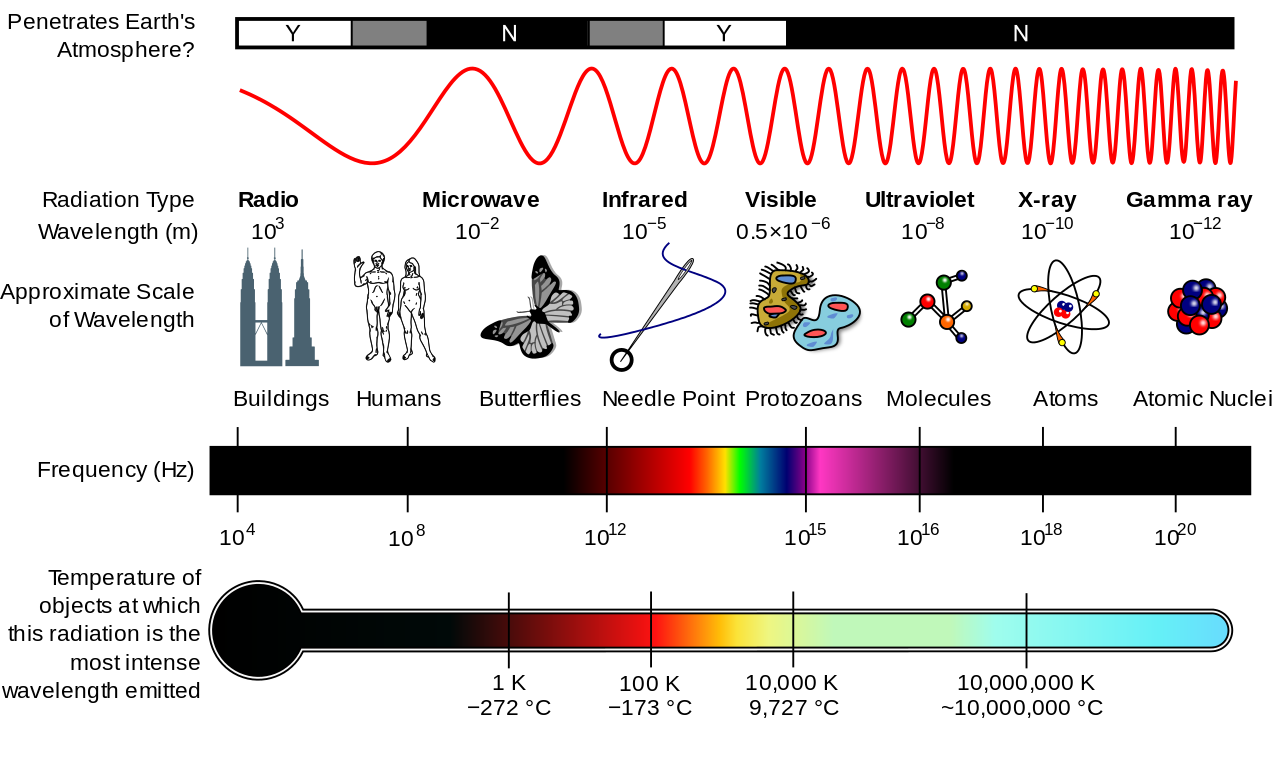The electromagnetic spectrum is roughly divided into ionizing and non-ionizing radiation. The 4G/5G conversation is concerned with non-ionizing radiation and it is helpful to understand the difference.
1. What is Ionizing Radiation?
Ionizing radiation is found at the far end of electromagnetic spectrum. It has very short wavelengths and very high frequencies. Examples include X-rays, gamma rays, and radiation from nuclear waste. (see graphic above) It is well established that ionizing radiation can cause direct and rapid harm by removing electrons from atoms with resultant DNA damage creating fixed mutations. It also produces “free radical” molecules (those with an imbalance of electrons) which can cause widespread injury to cell structures via oxidation of tissues and cell death.
2. What is Non-Ionizing Radiation?
Non-ionizing radiation has relatively longer wavelengths and lower frequencies. It includes the rest of the electromagnetic spectrum: ultra violet, visible light, infrared, millimeter waves, microwaves, radio waves, and extremely low frequency waves.
3. Natural vs. Artificial Non-Ionizing Radiation
Non-ionizing radiation occurs as natural emanations from the sun and is of vital importance to life on earth. Obvious examples here include the visible light spectrum and infrared frequencies.
Beyond this, however, are artificial non-ionizing frequencies and are primarily in the form of microwave and millimeter waves. These are produced and used in telecommunications and for military and industrial applications. This radiation is generally produced in high concentrations and now with a quality of erratic pulsations (5G). These artificial frequencies are known to act as environmental stressors, with toxic oxidative effects on biological processes unrelated to heat or to ionization.
4. More Than A Question of Heat Damage
The position of the telecommunications industry, FCC, and other compromised groups, is that non-ionizing radiation is of no concern if it does not create thermal injury (burning). Independently funded research proves otherwise. Artificial non-ionizing radiation can induce harmful biochemical changes in cellular structures including the DNA and cell membranes. The erratic pulsations of 5G and its use of beaming technology are also of considerable concern to scientists and health care professionals. Thousands of peer reviewed studies have been done showing links between non-ionizing radiation and harmful biological effects. (See the rest of this website for the documented evidence.)
It is worth knowing that some artificial radiation, primarily in the lower frequencies, can be of therapeutic benefit. Technologies exist and are being developed that utilize these frequencies. This technology is of a very specific nature and is still in its infancy. The point, however, is that electromagnetic frequencies do indeed interact with biological functions in profound ways that have nothing to do with heating.
5. Learn More, Question More…
Clearly, there is much more to the story of radiation, both naturally occurring and artificial. The above is offered to simply make it a bit easier to navigate the 5G conversation. Many of us involved in this topic came to it without a background in EMF, telecommunications, etc., but with an open mind and a passion for the well being of life. As it turns out, this story goes very deep. We encourage readers to further their understanding of these issues as they will surely impact the future of this planet and all life upon it.
SOURCES:
1. Wireless Radiation: An Undeniable Risk to Human Health
2. Captured Agency: How the FCC is Dominated by the Industries It Presumably Regulates
